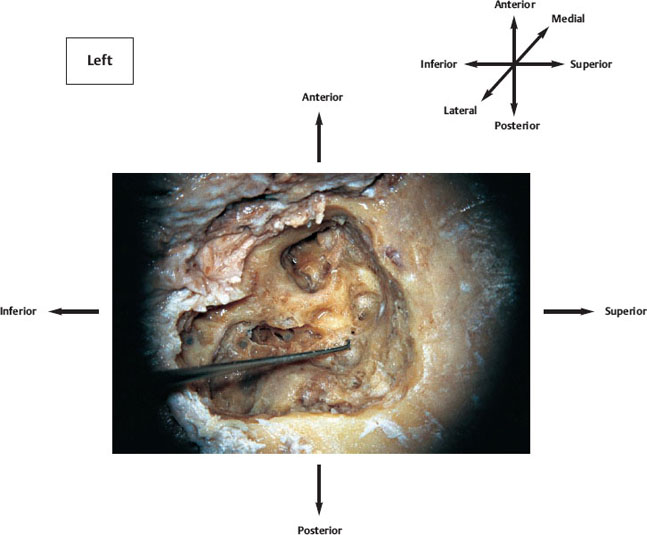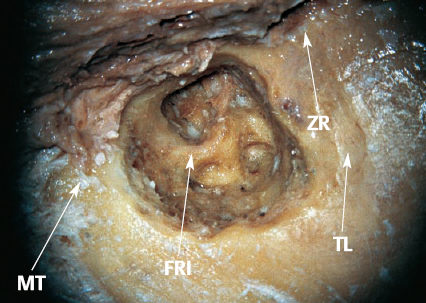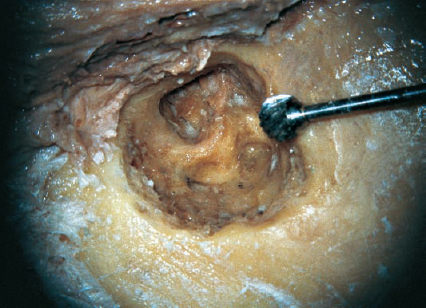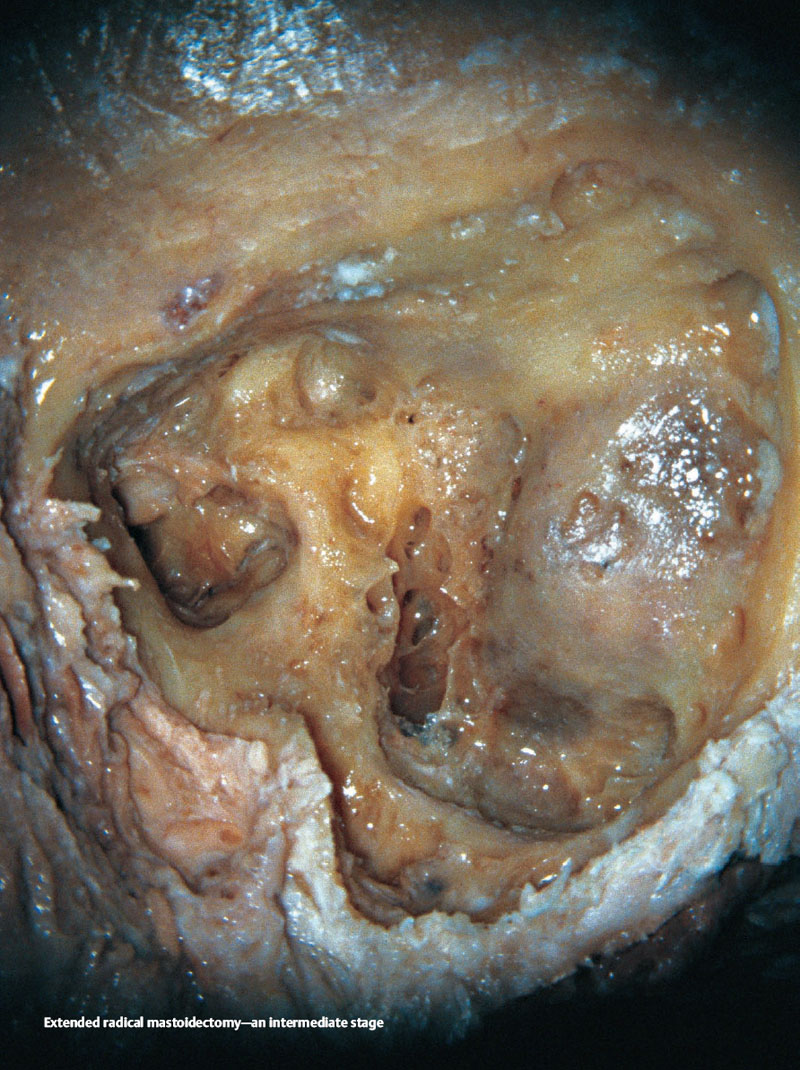27 Extended Radical Mastoidectomy Enlargement of the radical mastoidectomy with complete skeletonization of all of the neighboring structures and the semicircular canals. There is no specific classification for this procedure in surgical literature. It could be called the extended radical mastoidectomy. It is performed in the classical manner or as a modified form, with reconstruction of the tympanic membrane and the ossicular chain and preservation of the aeration of the tympanic cavity. It is mainly carried out in chronic otitis media with cholesteatoma. It is also an intermediate stage in neurotologic procedures such as subtotal petrosectomy, infratemporal fossa “types A, B, and C” approaches or the transotic approach. The procedure will be carried out on the temporal bone in which a limited radical mastoidectomy has already been performed. The critical structures are indicated in the figure. FRI: Facial ridge MT: Mastoid tip TL: Temporal line ZR: Zygomatic root In the first stage, using a large cutting burr, the cortical bone is drilled and the cavity is enlarged posteriorly toward the sigmoid sinus, and inferiorly toward the mastoid tip. Posteriorly, the drilling direction is from superior to inferior, parallel to the removed posterior wall of the external auditory canal; it is, at the same time, parallel to the sigmoid sinus. II: 7mm cutting burr MIL: Sigmoid sinus dural plate Using the same large cutting burr, the temporal line area is drilled in an anteroposterior direction, thus enlarging the cavity toward the dural plate of the middle cranial fossa. During this extensive drilling process, copious irrigation is necessary to prevent overheating of the burr. II: 7mm cutting burr MIL: Middle cranial fossa dural plate Definitions and Tips
Definition
Indications
Anatomical Orientation

Surgical Steps




Extended Radical Mastoidectomy
Only gold members can continue reading. Log In or Register to continue

Full access? Get Clinical Tree



